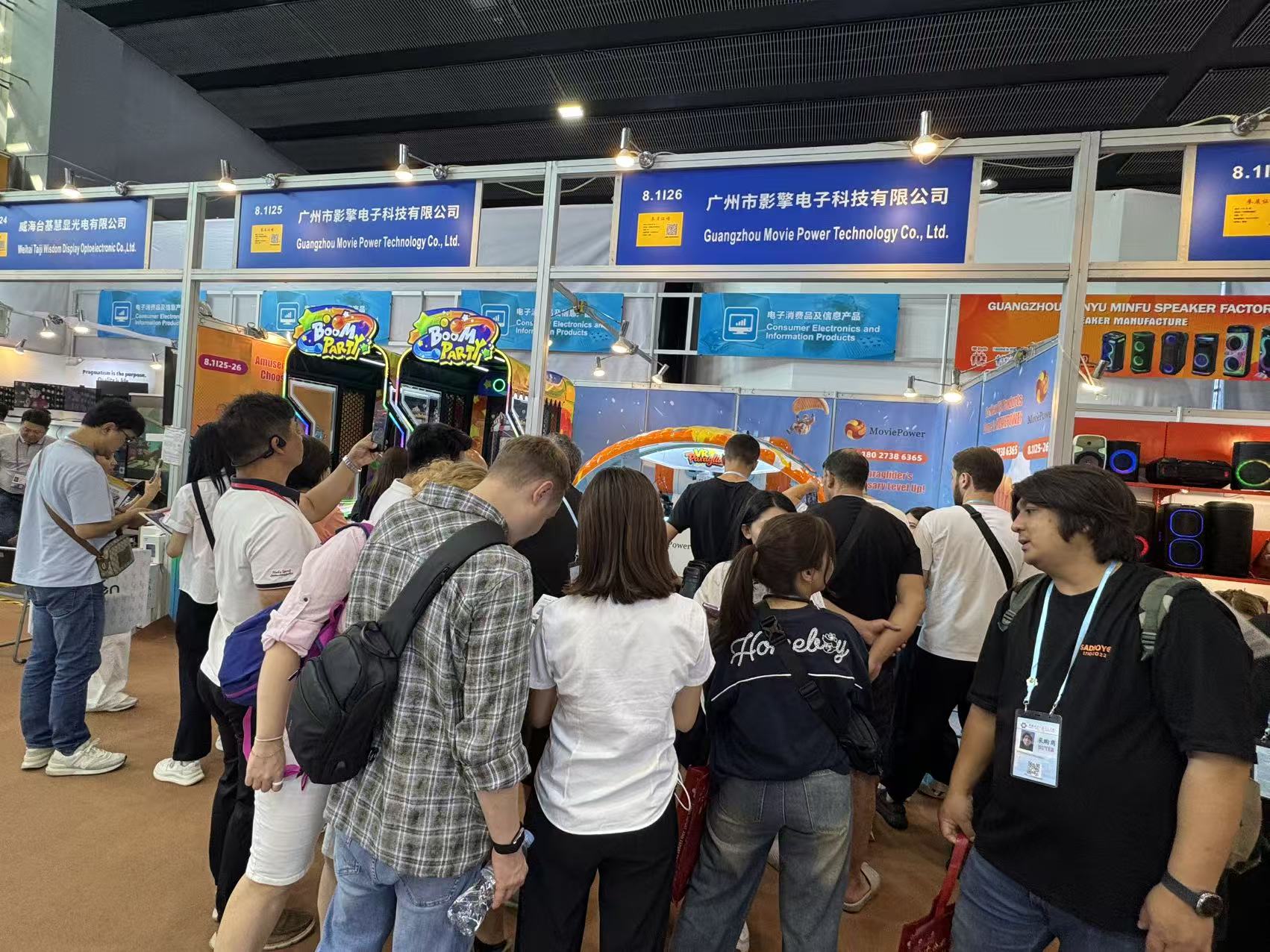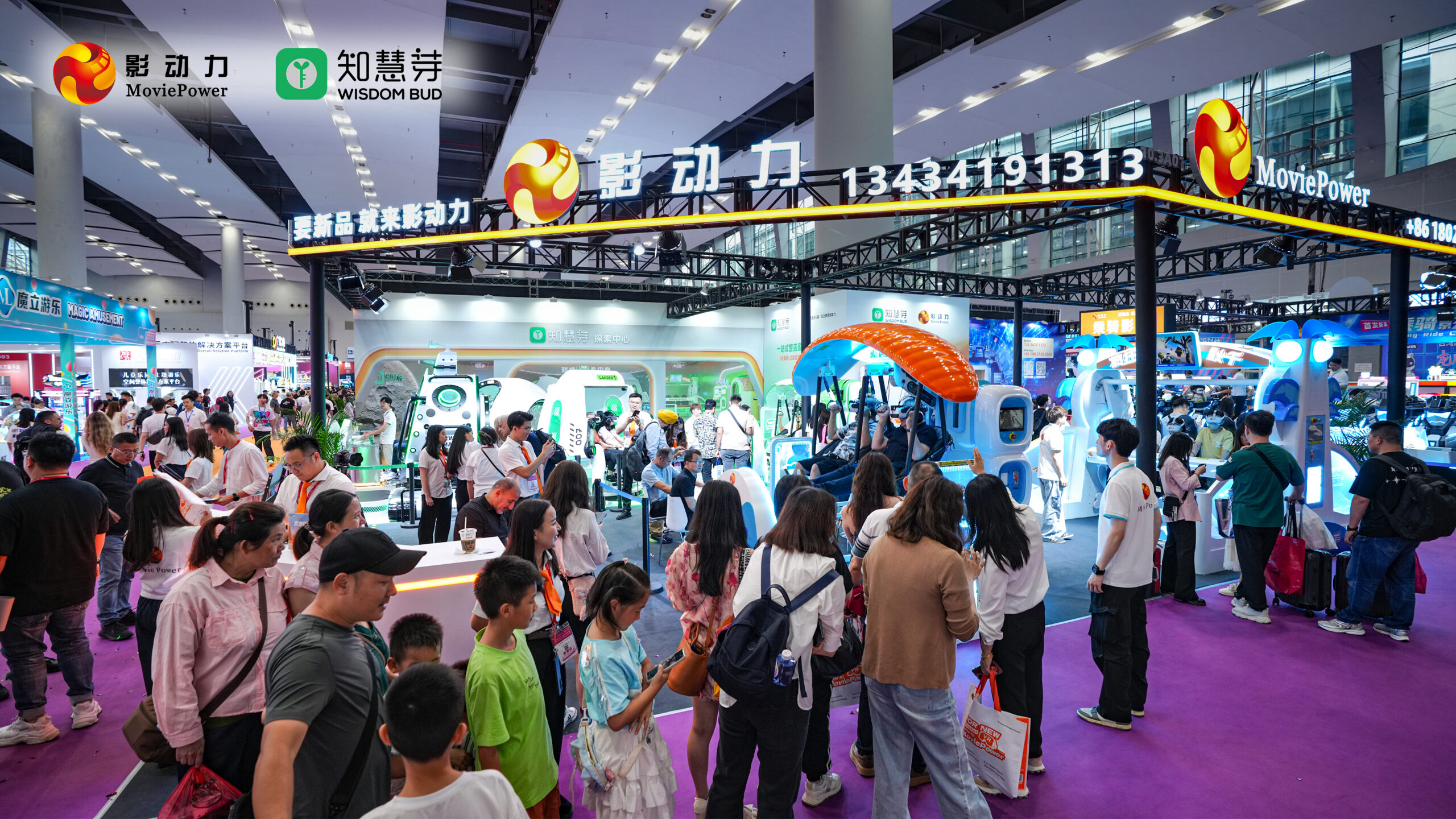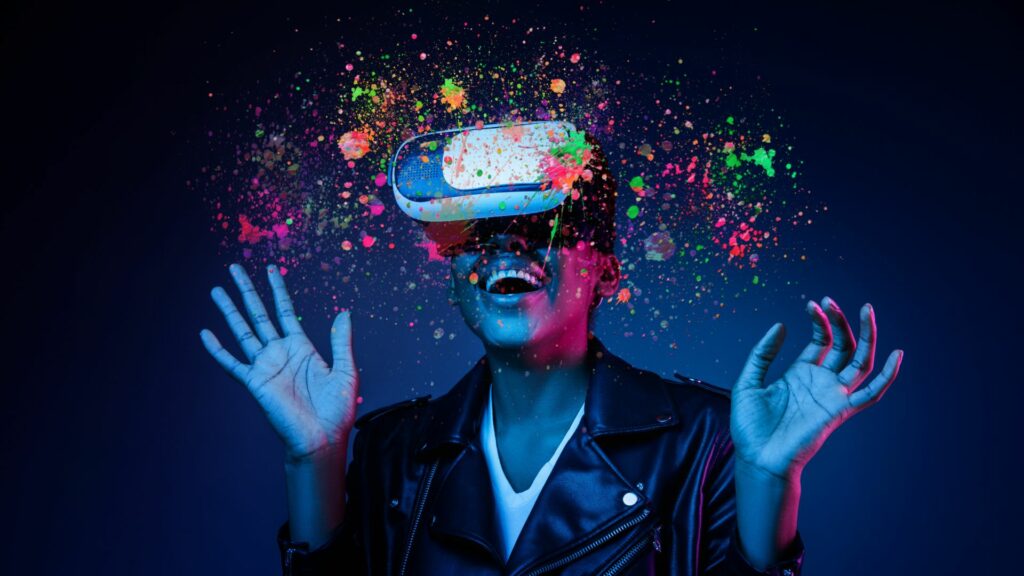
source: pinterest
In recent years, there has been a remarkable surge in the popularity and widespread adoption of Virtual Reality (VR) and Augmented Reality (AR) technologies. These cutting-edge technologies have captivated the imagination of people across various industries, revolutionizing the way we engage with the digital world. From gaming and entertainment to healthcare and education, VR and AR are transforming the way we experience and interact with our surroundings.
In this article, we will delve into the exciting world of VR and AR, exploring their definitions, functionalities, and the key industries where they are gaining significant traction. So, let’s dive in and explore the fascinating realm of VR and AR!
What is Virtual Reality (VR)?

A. Definition of VR
Virtual Reality, commonly known as VR, refers to a simulated experience generated by a computer that can be similar to or completely different from the real world. It immerses the user in a digital environment, creating a sense of presence and interaction within a virtual realm.
B. How VR Works
VR technology involves the use of specialized headsets or goggles that typically include a screen in front of the user’s eyes. These headsets utilize motion tracking sensors and are often paired with handheld controllers or gloves for enhanced interaction. By wearing the VR headset, users are visually and audibly disconnected from their physical surroundings, allowing them to enter and explore a digitally-rendered environment.
C. Key Features and Characteristics of VR
- Immersive Experience: VR technology aims to simulate a sense of presence and complete immersion, transporting users to realistic or fantastical environments.
- Interactivity: Users can interact with the virtual environment using hand controllers, motion sensors, or specialized gloves, enabling a rich and dynamic user experience.
- Stereoscopic 3D Vision: VR often offers stereoscopic 3D visuals, providing depth perception and enhancing the sense of realism within the virtual world.
- Spatial Audio: VR systems employ immersive audio techniques that react in real-time to users’ head movements, creating a sense of spatial awareness and enhancing the overall experience.
- Wide Range of Applications: VR finds application in gaming, simulations, training, therapy, and more, offering captivating and transformative experiences in diverse fields.
Virtual Reality technology has made remarkable advancements in recent years, and its potential in various industries is truly remarkable. It has paved the way for new opportunities in entertainment, education, healthcare, and beyond.
What is Augmented Reality (AR)?
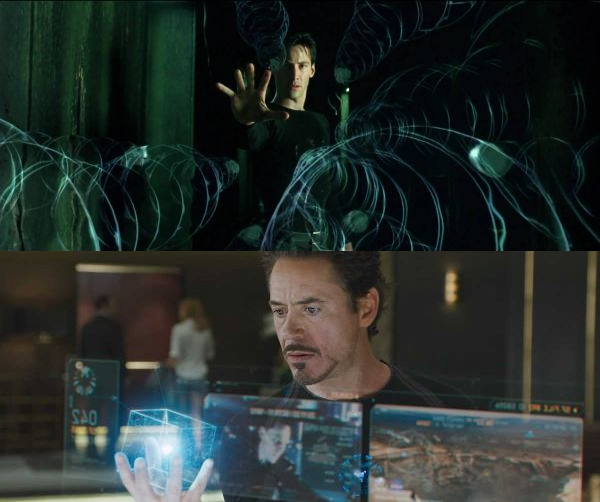
source: pinterest
A. Definition of AR
Augmented Reality (AR) is a technology that overlays digital information or virtual objects onto the real world, enhancing the user’s perception and interaction with their immediate environment. Unlike VR, which immerses the user in a fully simulated environment, AR keeps the user grounded in reality while superimposing digital elements.
B. How AR Works
AR technology blends real-world sensory input, such as visuals and audio, with computer-generated content in real-time. It utilizes cameras, sensors, and displays on devices like smartphones, tablets, and AR glasses to detect the user’s surroundings, track their movements, and overlay digital content accordingly. This enables users to see and interact with computer-generated objects or information seamlessly integrated into the real world.
C. Key Features and Characteristics of AR
- Real-time Interaction: AR allows users to interact with virtual elements in real-time, enabling them to manipulate digital objects or access information overlaid onto physical objects.
- Contextual Awareness: AR systems use sensors and data processing to analyze the user’s environment, allowing digital content to adapt and respond to real-world context and objects.
- Enhancing Perception: AR enhances the user’s perception by supplementing real-world visuals with additional information, such as annotations, directions, or data overlays.
- Wearable and Mobile Integration: AR experiences can be accessed through various devices, from smartphones and tablets to specialized AR glasses, making it more accessible and portable.
- Applications Across Industries: AR finds applications in fields like marketing, education, retail, navigation, and industrial maintenance, enabling innovative and practical solutions.
AR technology offers a new dimension of interaction and information visualization, blending the virtual and real worlds seamlessly. Its potential for transforming industries and enhancing user experiences continues to expand, opening up avenues for creativity, efficiency, and engagement.
In the next section, we will explore the differences between AR and VR, understanding how each technology offers unique experiences and impacts diverse industries.
Difference between AR and VR
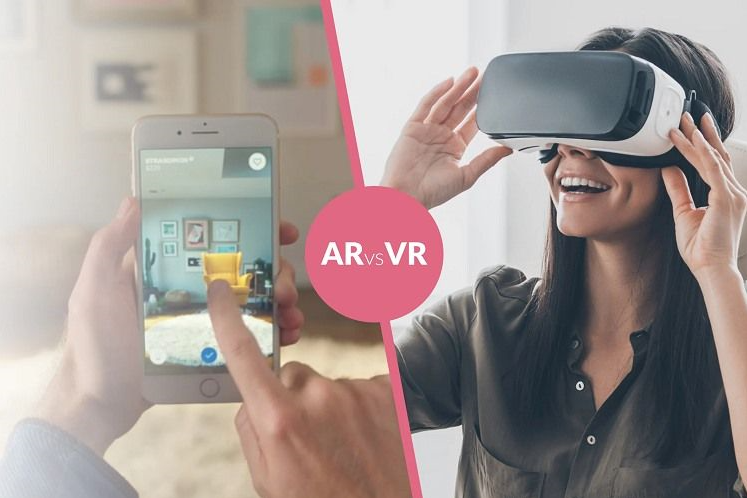
source: pinterest
A. Conceptual Differences
While both Augmented Reality (AR) and Virtual Reality (VR) technologies enhance the user’s perception, they differ in their fundamental concepts:
- AR enhances the real world by overlaying digital content onto the user’s view, blending virtual elements with the physical environment.
- VR, on the other hand, immerses users in a completely virtual environment, disconnecting them from the physical world and placing them in a computer-generated reality.
B. Technological Differences
AR and VR also differ in their technological frameworks:
- AR utilizes devices like smartphones, tablets, or AR glasses to superimpose digital content onto the real world. It relies on computer vision, sensors, and image recognition to interpret and align virtual elements with the surroundings.
- VR requires dedicated headsets that display a fully immersive digital environment. These headsets often include built-in motion tracking sensors to detect the user’s movements and create a realistic simulation.
C. User Experience Differences
The user experiences of AR and VR vary significantly:
- AR enhances the user’s perception of reality by overlaying information or objects onto their real-world view. This offers a more interactive and contextually relevant experience as users can simultaneously engage with virtual and physical elements.
- With VR, users are fully transported to a simulated environment, experiencing a complete immersion where they can interact with and navigate through a digitally-created world. This provides a more in-depth and impactful experience, devoid of real-world distractions.
D. Industries Where AR and VR are Predominantly Used
Both AR and VR have found applications in various industries, each with its own focus:
- AR is predominantly used in industries such as marketing and advertising, retail and e-commerce, education and learning, industrial maintenance and repair, and navigation and GPS assistance. These applications leverage AR’s ability to augment real-world experiences and provide additional information or functionalities.
- VR, on the other hand, is widely used in gaming and entertainment, training and simulations, healthcare and therapy, real estate and architecture, and tourism and virtual travel. These industries rely on VR’s capability to create immersive and realistic experiences that transport users to different places and scenarios.
Understanding the differences between AR and VR helps to identify their unique strengths and applications. In the next section, we will explore specific examples of VR and AR applications across various industries, showcasing their versatility and potential for future growth.
Examples of VR and AR Applications
A. Virtual Reality Applications

source: pinterest
- Gaming and Entertainment
VR has revolutionized the gaming industry by offering immersive gameplay experiences. Players can engage in thrilling adventures, explore virtual worlds, and interact with realistic characters by VR arcade machines, bringing a new level of excitement and immersion.
- Training and Simulations
Industries such as aviation, military, healthcare, and hazardous work environments utilize VR for training purposes. VR simulations provide a safe and realistic environment for trainees to practice skills, decision-making, and emergency scenarios, reducing risks and costs associated with traditional training methods.
- Healthcare and Therapy
VR is employed in healthcare to alleviate pain, provide cognitive therapy, and assist in physical rehabilitation. It allows patients to immerse themselves in virtual environments, distracting them from pain or creating therapeutic scenarios that aid in their recovery.
- Real Estate and Architecture
VR enables virtual property tours, allowing prospective buyers to explore properties remotely. Architects and designers utilize VR to create immersive walkthroughs of building designs, providing clients with a realistic feel of the space even before construction begins.
- Tourism and Virtual Travel
VR offers virtual travel experiences, allowing users to visit famous landmarks, explore tourist destinations, and even enjoy virtual vacations from the comfort of their homes. It provides a glimpse into different cultures and destinations, inspiring wanderlust and enhancing travel planning.
B. Augmented Reality Applications

source: pinterest
- Marketing and Advertising
AR is used in marketing campaigns to engage customers through interactive experiences. Brands can create AR mobile apps or utilize AR features like filters and stickers to enhance product experiences, provide virtual try-ons, or showcase 3D product models.
- Retail and E-commerce
AR enhances the shopping experience by allowing customers to visualize products in their own space through virtual try-on, see 3D product models, and receive personalized product recommendations. This improves customer engagement and decision-making.
- Education and Learning
AR is transforming education by providing immersive and interactive learning experiences. It can overlay informative content onto textbooks or physical objects, making learning engaging and visually stimulating. AR also allows students to explore historical sites, scientific concepts, and more.
- Industrial Maintenance and Repair
AR assists technicians by overlaying real-time information or step-by-step instructions onto their field of view, simplifying complex maintenance or repair tasks. This improves efficiency, reduces errors, and enhances safety in industrial settings.
- Navigation and GPS Assistance
AR-based navigation apps utilize real-time camera input and overlays digital information onto the user’s view, offering a more intuitive and informative way to navigate. Users can see directions, points of interest, and other relevant information while viewing the real world.
These examples showcase the wide range of applications for both VR and AR, demonstrating their potential to enhance various industries and create novel experiences for users.
Conclusion
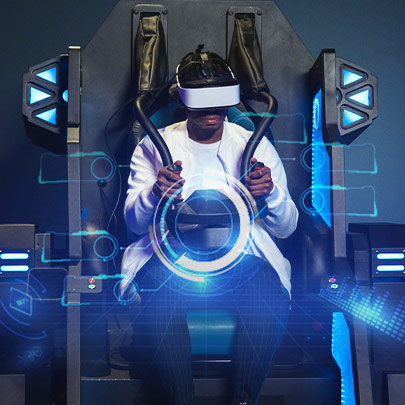
source: pinterest
AR and VR technologies are carving a path towards a new era of immersive, interactive, and transformative experiences. While AR enhances the real world by overlaying digital content, VR transports users to fully digital environments. Both offer unique advantages and find applications in industries such as gaming, entertainment, training, healthcare, marketing, and more.
As these technologies advance, we can anticipate further innovations and widespread adoption, making AR and VR integral parts of our everyday lives. Embracing the potential of AR and VR opens up endless possibilities for enhancing industries, education, entertainment, and the way we interact with the world around us.

